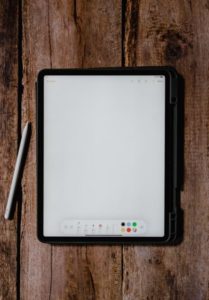
Effective note-taking is a skill that transcends the boundaries of the classroom. In a world brimming with information, the ability to distill and retain key points is invaluable, particularly for students striving to elevate their academic work. Note-taking is not merely jotting down what you hear or read; it’s an art that, when mastered, transforms the quality of your assignments and projects, ensuring that every piece of information serves a purpose.
While students often seek efficient ways to handle their academic load, such as requesting a Paperwriter to write my papers, mastering note-taking can significantly enhance their learning process and project quality. This guide is tailored to provide you with the best strategies to refine your note-taking skills. By adopting these techniques, you can ensure that your notes are not just a record of information, but a powerful tool in your academic arsenal, propelling your assignments and projects to the next level.

The Foundation of Effective Note-Taking
Recognizing whether you’re a visual, auditory, or kinesthetic learner will help you tailor your note-taking strategy. Aligning your method with your learning style ensures that your notes reinforce your natural comprehension and retention processes. The right tools and environment are crucial. Whether you prefer digital tools or traditional pen and paper, ensure your choice enhances your note-taking. Prepare your environment to minimize distractions and set clear objectives for what you aim to achieve with your notes.
Note-Taking Methods: Exploring Options
- The Outline Method: This traditional method, ideal for linear thinkers, involves structuring your notes in bullet points, each point representing a separate idea or concept.
- The Cornell Method: This method divides your paper into three sections: cues, notes, and summary. It encourages an interactive system of learning through note-taking, questioning, and summarizing.
- Mind Mapping: A more visual approach, mind mapping involves writing your main idea in the center of your paper and branching out to related concepts, making it ideal for brainstorming sessions.
- The Box Method: Useful for comparing and contrasting information, this method involves dividing your page into sections, each box dedicated to a different category or topic.
- The Charting Method: When dealing with lots of data or chronological information, the charting method helps organize information in columns and rows for clarity and quick reference.
Integrating Technology
Platforms like Evernote, OneNote, and Notion offer unique features like cloud storage, multimedia integration, and cross-device syncing, enhancing the note-taking process and accessibility. For auditory learners or when attending lectures, voice notes are invaluable. They allow you to revisit the exact words and explanations, ensuring that nothing gets lost in translation. Integrating digital resources such as e-books, online articles, and educational videos can enrich your notes and provide a multi-dimensional understanding of the subject matter.
Enhancing Notes for Better Retention and Recall
Incorporating diagrams, charts, and images can significantly boost memory retention, making complex information more digestible. Engaging with your notes through active recall (testing yourself on the material) and spaced repetition (reviewing the material over increasing intervals) solidifies knowledge and aids long-term retention.
Organizing and Refining Your Notes
Organizing your notes with clear headings, subheadings, and an indexing system makes revisiting and retrieving information effortless. Notes are living documents. Regularly revising and updating them ensures they remain relevant and reflective of your growing understanding. Condensing and synthesizing information helps in creating a cohesive summary of your learnings, making review sessions more efficient.
Applying Note-Taking Skills to Assignments and Projects
Transitioning from raw notes to structured drafts is a crucial step in the writing process. Your organized notes can serve as an outline for your essays, reports, or project plans. In group projects, sharing and integrating notes ensures that all members are on the same page, making the project more cohesive and comprehensive. Effective note-taking strategies streamline the research process, ensuring that you gather, understand, and retain all necessary information, ultimately enhancing the quality of your work.
Overcoming Common Note-Taking Challenges
Learning to identify key information and summarize effectively can prevent the overwhelm that comes with excessive note-taking. Developing shorthand symbols, using abbreviations, and honing your summarization skills can significantly increase your note-taking speed without sacrificing the quality or integrity of the information.
Final Thoughts
Note-taking is a skill that, when honed, can profoundly impact the quality of your academic work. The strategies outlined in this guide are designed to empower you to capture, organize, and utilize information effectively, transforming the way you approach your assignments and projects. As you incorporate these techniques into your study routine, remember that note-taking is a personal and evolving process. Be patient with yourself and allow your method to adapt to your changing needs. For those who require additional academic support, turning to the best assignment writing service can complement your efforts, providing professional guidance and ensuring academic success. Embrace the journey of becoming a more efficient and effective note-taker, and watch as your assignments and projects reach new heights of excellence.

